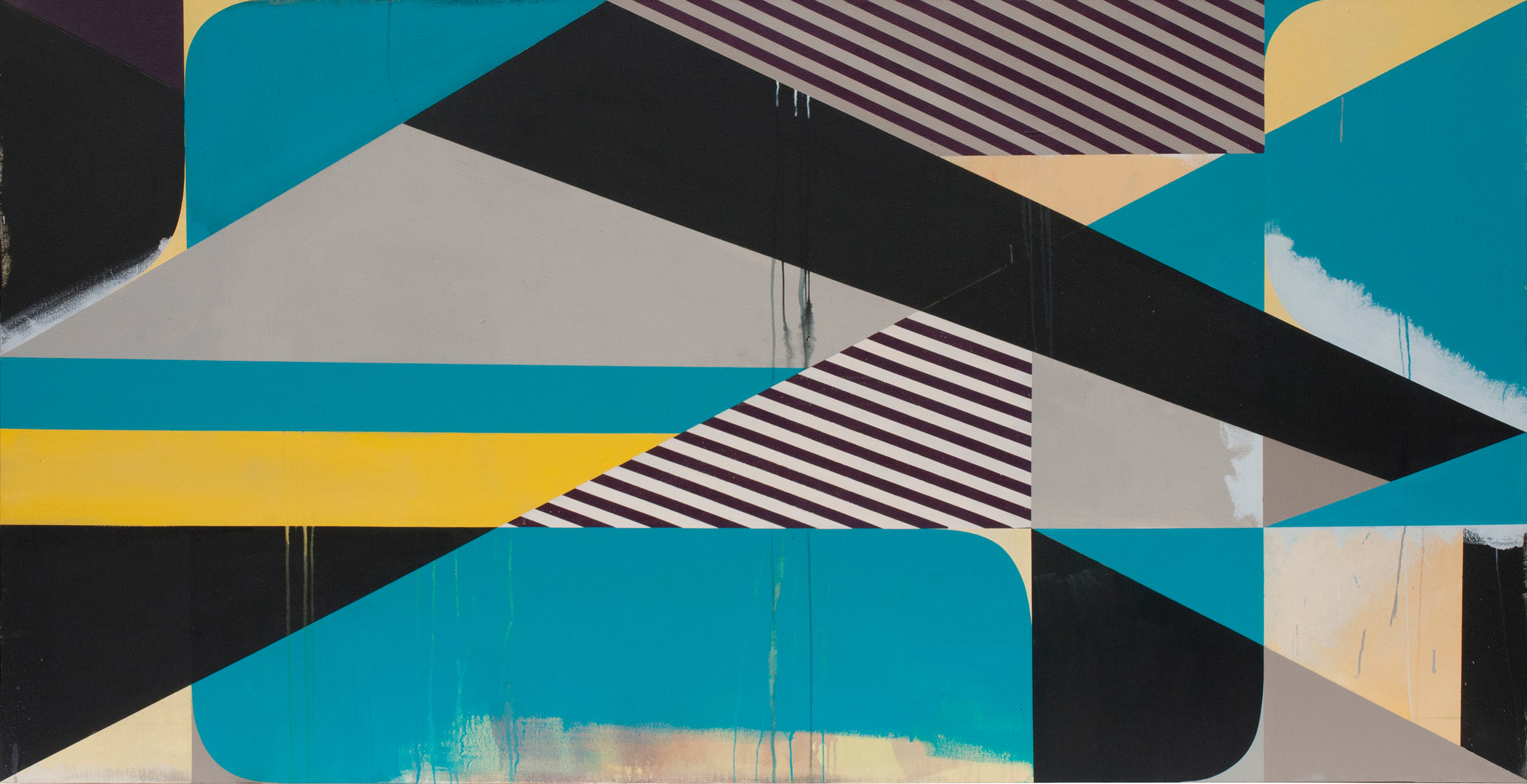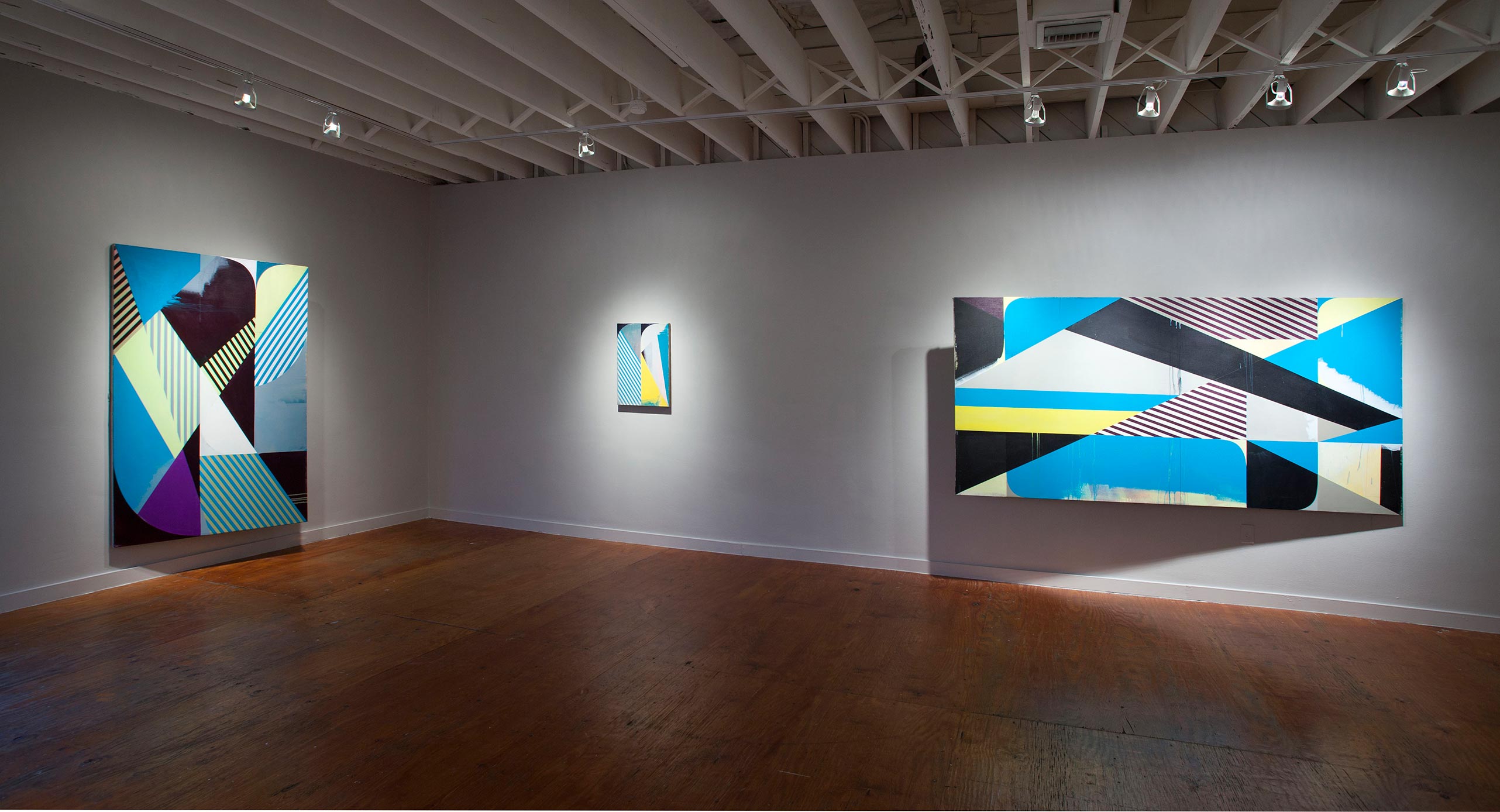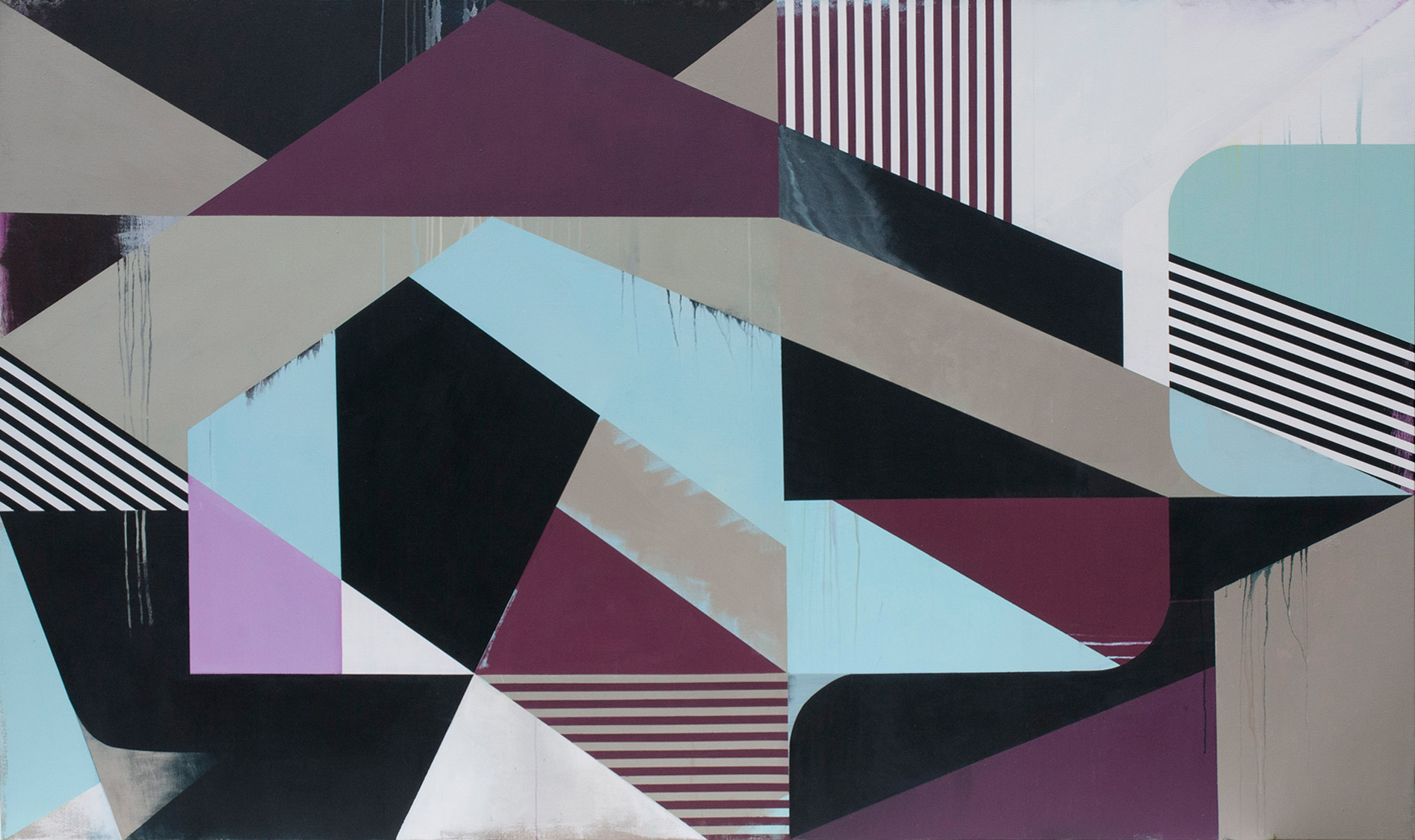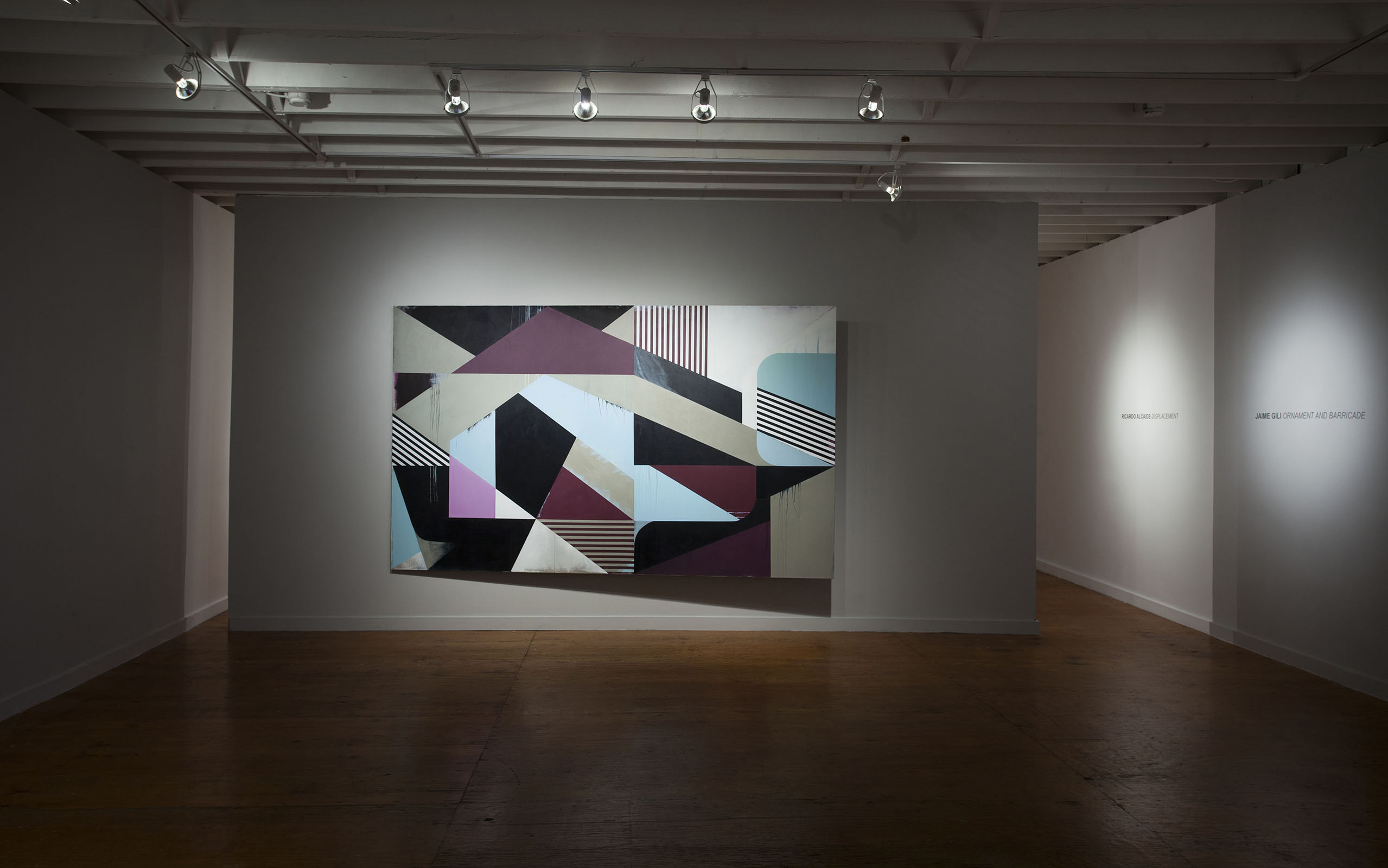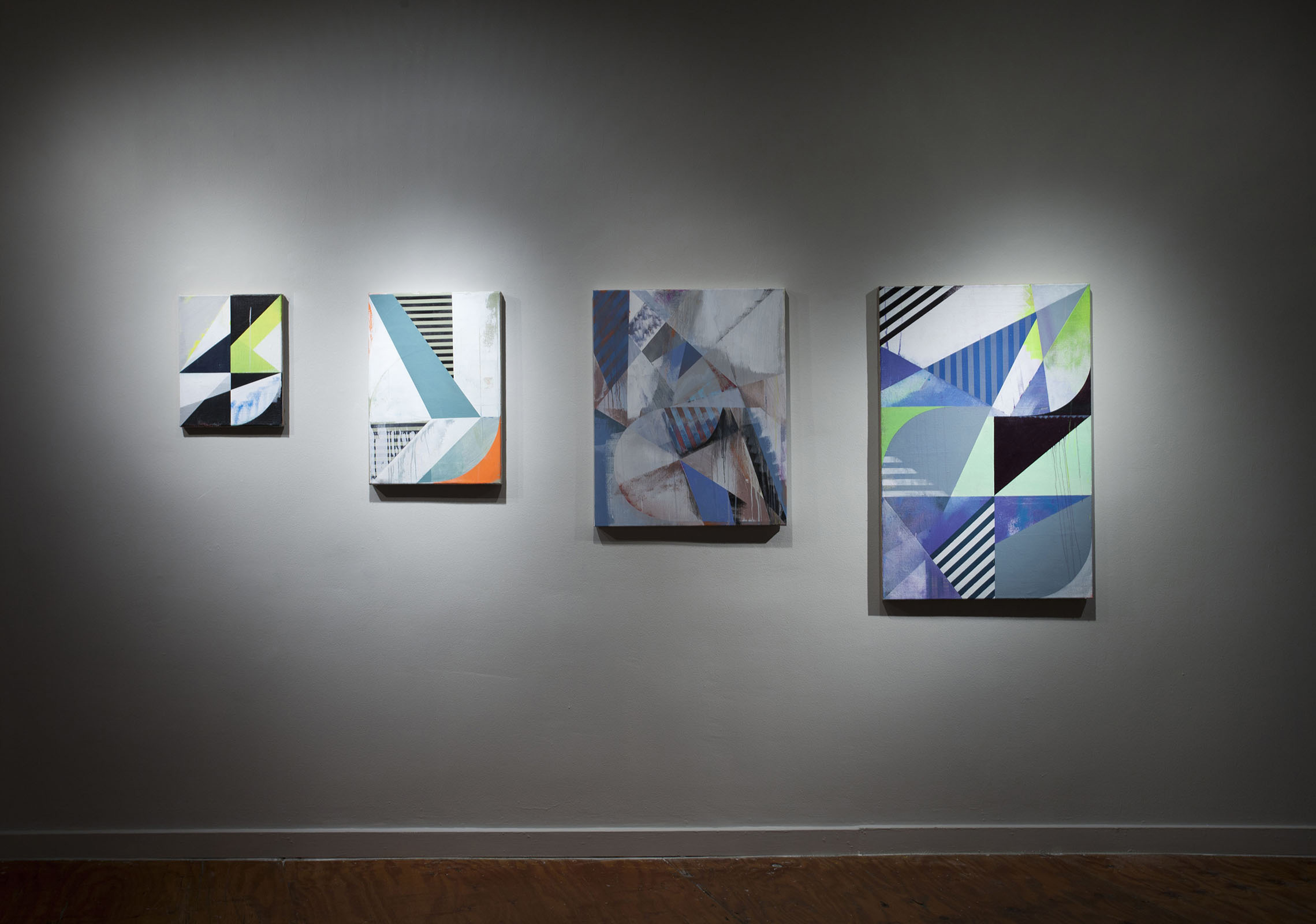ORNAMENT AND BARRICADE
Alejandra von Hartz
Miami, USA
2014
Ornament and Barricade was Gili’s second solo show at Alejandra von Hartz gallery in Miami. Hinting at Adolf Loos famous text ‘Ornament and Crime’, the exhibition questions how the speed and pace of painting differs from the speed of the ideas that may enter its creation. The paintings use stories from the 1950s about Carlo Scarpa and Gió Ponti and their relationship with Venezuela, but their creation also coincides with the deepening of the troubles in the country and the beginning of widespread street protests.
From the statement on the press release: “In recent years I recognise I have repeated a dialectical formula that recreates links between Europe, European minds, and tropical South America. For instance, I did it for an exhibition in Winterthur in which I placed Max Bill in Henri Pittier’s Park in Venezuela; and also when I completed the story about Gió Ponti visiting the Venezuelan coast, and even when placing Reverón in the Mediterranean Sea for a new series of paintings. I was about to work on Carlo Scarpa – an obvious candidate as he built the Venezuelan pavilion at the Venice Biennale, which has always fascinated me – when I recognized the pitfall and tried to avoid it, perhaps because the pavilion itself lacks the anecdote that justifies a longer dedication, perhaps because it was not the right moment.
And yet, Scarpa’s story and his use of concrete and structural ornament keep on fascinating me, and he has indeed been present when developing the current series of works. But of course, painting is a slow medium, and the works here unavoidably contain elements from the previous 2013 series which was a utopian homage to a fictional meeting between Armando Reverón and Gió Ponti. So, even if Scarpa was in the studio, Ponti and Reverón were also present at the party.
In the real world, miles away, something else was happening that entered the equation. The protests against the regime were starting on the streets of Venezuela. ‘Guarimba’ is a Venezuelan word that is becoming more common these days, it is the word given to the makeshift barricades built by protestors which are used to block roads. Guarimbas sprang up in the city in the protests in spring 2014, halting daily life in demonstration against the regime. Many youths were detained and imprisoned, and even tortured. One year on, things have only worsened, and only a few other ways to protest remain. Now imagine the doors of the studio as a barricade that only lets some things come through. But the barricade is a response to what is happening. The gates are also the work, the work is a final guarimba that decides what can and cannot enter it. A filter that is in itself a response to what is happening. Painting is a political act, but it is also a terribly slow one.”
+ LINK
